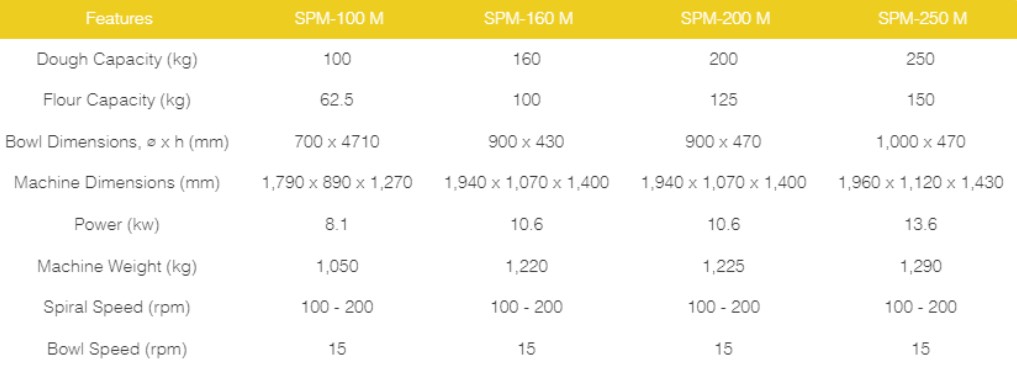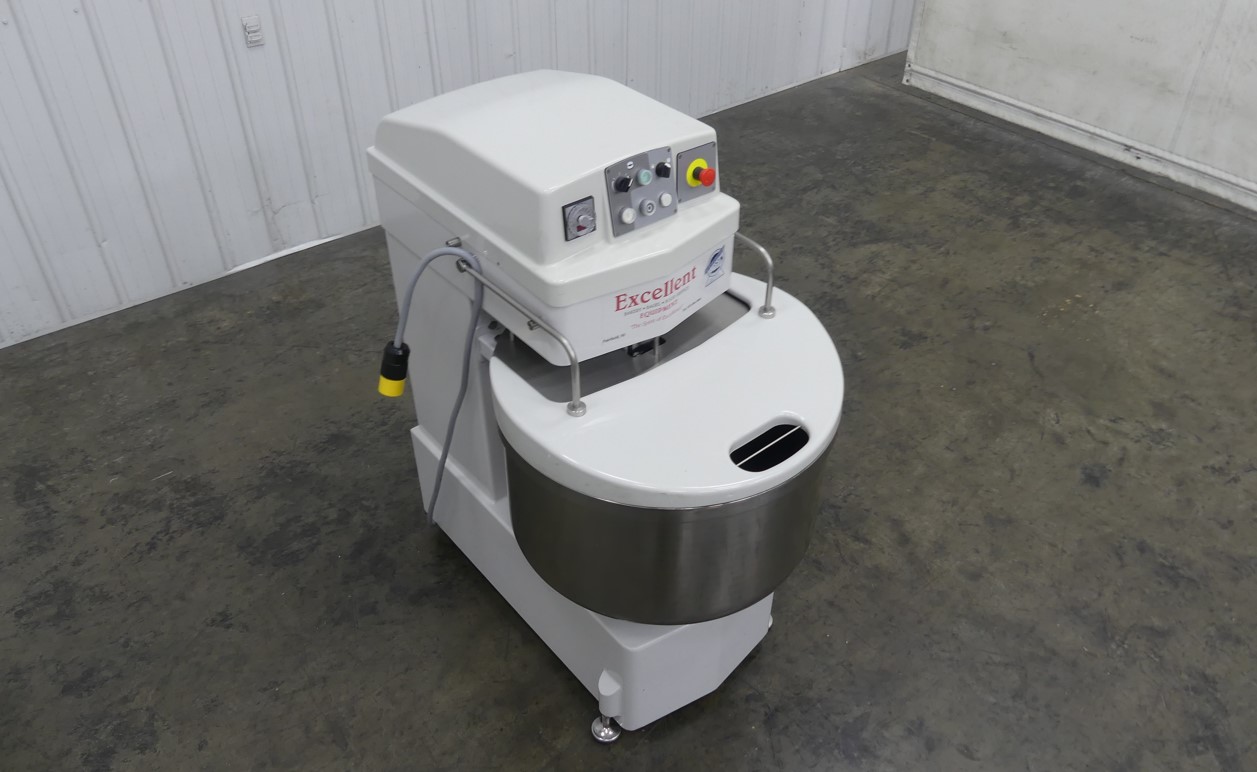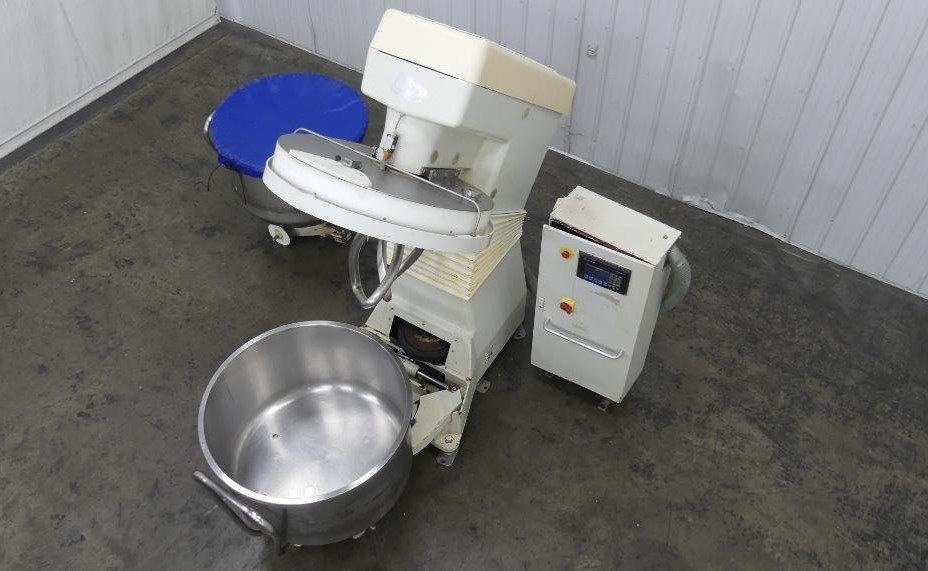A Guide to Spiral Mixers
Elevating Bakeries with Efficient Mixing & Superior Consistency
Spiral mixers are essential for bakeries due to their unique kneading action, which effectively blends and develops dough without overheating. This ensures proper gluten formation and ideal dough consistency, resulting in high-quality baked goods. Their efficient mixing process, higher capacity, and reduced oxidation make spiral mixers indispensable for consistent and superior bakery products.
We will discuss the following in this guide.
- What is a Spiral Mixer?
- Distinguishing Features
- Capacity Distinction
- Spiral Mixer vs. Planetary Mixer
- Capacity Distinction
- How a Spiral Mixer Works?
- Who Would Use a Spiral Mixer?
What Is a Spiral Mixer?
[Source: Hobart Food Equipment and Service]
A spiral mixer is a type of industrial mixing machine primarily used in bakeries. It is designed specifically for kneading and mixing dough to ensure a thorough blending of ingredients and the development of gluten, which is essential for producing high-quality baked goods such as bread, pizza dough, bagels, and pastries.
The key feature of a spiral mixer is its unique mixing action, where a spiral-shaped agitator spins in a stationary position while the mixing bowl rotates. This method of mixing allows the spiral hook to work through the dough gradually, providing gentle and efficient kneading without overheating. As a result, the dough is evenly mixed, properly aerated and achieves the desired texture and consistency. These mixers do not affect the temperature of the dough as much as other types of mixers, and they are great for mixing large amounts of dough.
Spiral mixers come in various sizes, from small countertop models for small-scale baking operations to large industrial units for high-capacity production. They are favored in bakeries for their ability to handle large batches of dough consistently and efficiently, ensuring optimal mixing and gluten development.
Distinguishing Features
Spiral mixers use two motors — one to rotate the bowl and one to rotate the spiral arm — and a pulley system instead of gears. This results in smoother, quieter action.
They often operate on two mixing speeds. The slower first incorporates ingredients evenly while minimizing splash or mess. The faster second speed controls oxidation and kneads the dough.
Bowls can often spin bidirectionally, which helps improve dough consistency and provides the ability to produce smaller batch sizes.
Capacity Distinction
It’s important to know the difference between dough capacity and flour capacity when discussing spiral mixers.
Dough capacity refers to the maximum amount of finished dough that a spiral mixer can handle. It includes the flour but also other ingredients such as water, yeast, salt, and any additional additives used in the dough recipe.
Flour capacity refers to the amount of flour that can be used in the dough mixture. It does not take into account the other ingredients.
Understanding this distinction is crucial when selecting a spiral mixer for your operation. Depending on the specific recipe and the desired batch size, bakers need to consider both the dough capacity and the flour capacity to ensure that the mixer can handle the intended production volume while maintaining the desired dough consistency and quality.

Additional Equipment
If you are considering purchasing a spiral mixer, you may also require certain upstream and downstream equipment to ensure a smooth operation. It's worth noting that the list provided below is not comprehensive and there may be additional equipment that could enhance your production.
Upstream Equipment
Downstream Equipment
- Sheeters
- Proofer
- Ovens
- Enrobers
Popular Manufacturers
- Hobart
- Diosna
- Esmach
- ABS
Industries Used In
- Bakery
- Breads
- Bagels
- Pizza
Spiral Mixers vs. Planetary Mixers
Spiral Mixer
- Versatile capacity options allow users to create smaller batch sizes even with larger bowls, mixing less than 10% of the unit’s capacity.
- Best used for artisanal breads, bagels, and pizza.
- Quieter than planetary mixers.
- Bidirectionally rotating bowls
- Larger floor footprint
Planetary Mixer
- Offer great versatility for a wide range of jobs
- Rough kneading
- Bowl does not rotate
- Size versatility - can fit on a tabletop
- Larger bowl sizes won’t allow for smaller batch sizes
Questions to consider before buying or selling
Buying
- What product was last ran?
- Does it have any additional bowls?
- What are the bowl sizes for the unit?
- Does it have any guarding?
- What is the overall size of the mixer?
Selling
- What product are you running?
- What size capacity do you need?
- What size bowls do you need?
- What kind of floor space do you have available in your bakery?
Summary
Spiral mixers are the number one mixer on the market for artisanal breads, bagels, and pizza as their larger bowl sizes facilitate diverse mixing needs. These machines also allow for better water absorption in dough, leading to improved digestibility and cost savings.
Click here to view our inventory of spiral mixers.
If you’re interested in one of these units, contact our sales team to find the machine that’s best suited for you and your product.

